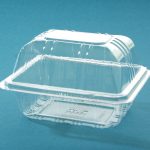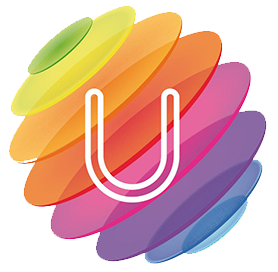PACKAGING
We classify packaging as primary, secondary and tertiary. At Uniplastic we are specialists in the first two. Plastic packaging is characterized by improving conventional packaging, for example, in cardboard, since it combines two functions: One operational, insofar as it allows containing products (food, common goods, etc.) and another, the most relevant, protection of the product, since it allows to extend its useful life (through controlled atmosphere, O² barriers, UV, Light, etc.) This competitive advantage is the most valued because the products last longer, stay fresher and in better conditions for consumption. It should be noted that in the case of secondary packaging, it also allows the design to be combined with the primary one: it would be the case of the perfume bottle combined with its transparent or printed case. This pairing allows for better designed and more effective marketing campaigns.
- Primary Packaging
Primary packaging is the type of packaging that is in direct contact with the products, it is responsible for protecting them and maintaining their ideal characteristics. For example, the water bottle made of PET (virgin or recycled) by blow molding.

- Secondary Packaging
Secondary packaging is the one that is responsible for grouping and/or containing previously packaged products. An example would be the blister that contains 6 bottles of water.

- Tertiary Packaging
Tertiary packaging is one that groups and supports secondary packaging to prevent damage during cargo handling, storage and transportation. It includes the protection film, strapping, etc.

PACKAGING MANUFACTURING TECHNIQUES
Thermoforming is an industrial process that is used to manufacture multiple products (including packaging) at high speed and at a relatively cheap price. The process consists of heating a sheet of plastic such as PET and placing it in a mold while applying vacuum and pressure to give rise to a thermoformed sheet or bubble.
There are 2 main methods of thermoforming: by vacuum and by pressure.
Vacuum thermoforming uses heat and pressure (created by vacuum) to mold plastic sheets into a final product. Once the sheet enters the mold area, a kind of vacuum cleaner is used that creates a vacuum, thus creating great pressure and allowing it to be molded.
Pressure thermoforming is quite similar to the vacuum technique. The difference is that a piston helps to generate extra pressure with which containers with characteristics that require much more precision and in a faster way can be generated.

Plastic injection is a process by which the raw material (thermoplastic) is melted by the effect of heat in a machine called an injector. Once the material is molten, the machine injects it into the hollow cavities of a mold with a certain pressure, speed and temperature.
After a certain time, the material cools down and becomes solid, acquiring the shape of the cavities of the mold in which it is found, giving rise to the final plastic parts.

The fundamental principle of in molding or IML in packaging is to fuse a previously printed label into a plastic injection mold, obtaining a unique product with a non-removable label inside.
Materials: The most widely used material is polypropylene (PP) although it can also be made of other polymers. In containers they are usually printed in flexo or offset and vary between 50μm and 120μm without electrostatic charge.
The types of PP that are used for the manufacture of labels depend on the container. In small containers (yogurt type) BoPP is usually used bioriented polypropylene (BoPP) and in some cases oriented polypropylene (oPP). Normally the larger volume containers and the lids are made of PP cast, this type of polypropylene is manufactured using calenders and, unlike BoPP or oPP, it does not stretch during its manufacture, so when it is injected it stresses less and the tops are flatter.
At Uniplastic we have optimal plastic solutions that adapt to all types of containers and functionalities.
Process: Once printed, the label is inserted into the mold. To fix it in the desired place, it is given a small electrostatic charge so that it adheres to the selected place. It is then that the injection process begins. The final result is a container with a non-removable label, product of the fusion of the injected plastic with the label.
Advantages: This type of packaging has many advantages over conventional injected packaging, not only in terms of design but also in terms of the additional properties that the product can offer thanks to the barriers that can be added: O², UV, Light, or the combination of all of them. Some of our products can have up to 7 different layers that provide different properties. The O² barrier allows the useful life of the product to be longer. The light barrier can improve the appearance of the product, the UV barrier maintains the properties of the product in optimal conditions.
IML for non-packaging: The IML technique is not exclusive for the manufacturing of packaging. There are other higher volume applications in which they are also very common, such as the customization of furniture, chairs, etc. common in points of sale (POS). An example is the tables and chairs personalized with the image of a soft drink brand that we find on the terraces of the bars. Usually they are manufactured in thicker PP Cast, up to 300μm and can be screen printed.

PET, PP or PVC sheets are normally used in the manufacture of packaging. (all in recycled versions). These sheets can be printed, normally in UV Offset, digital, screen printing, etc. and once printed, they are stamped, folded and sealed using different techniques (gluing, ultra sound, high frequency…)
Since the packaging is a secondary packaging, that is, it contains a primary packaging, when we use transparent sheets that reveal the product inside, for example a perfume case, it allows designers to combine the product marketing of the primary packaging with that of the secondary.
The choice of each plastic depends on the functionalities and the type of machining to which you want to submit. For example, PP is less transparent but more resistant and with less weight, PET and PVC are very transparent but more rigid and heavy, etc. Before choosing the product, it is necessary to take into account the sealing techniques that are going to be used since it is not the same, for example, the use of high frequency in PET or PVC, or the use of PUR-based polyurethane glues ( hot melt).
At Uniplastic we can help you select the most suitable plastics depending on the purpose.

